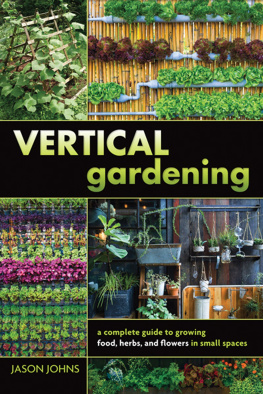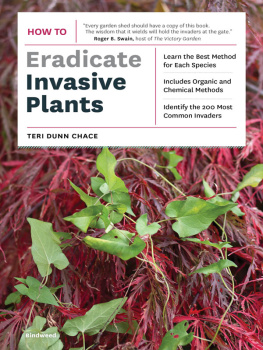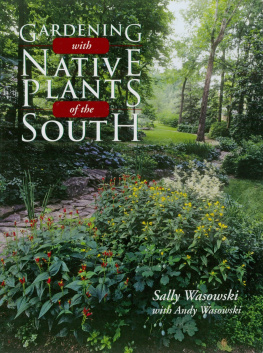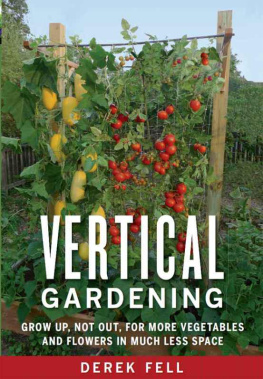Armitages Vines and Climbers

Armitages
Vines and Climbers
A GARDENERS GUIDE
TO THE BEST VERTICAL PLANTS
ALLAN M. ARMITAGE

Frontispiece: Clematis Durandii weaving through
Schizophragma integrifolium
Opposite: Canavalia gladiata seeds in a pod
Many thanks to all my plant friends who contributed images to supplement mine: Suzy Bales, Dan Benarcik, Robert Bowden, Lyndy Broder, Donnie Carlson, Meg Green, Lane Greer, Loren Hallstrom, Judy Laushman, Alan Shapiro, Vincent Simeone, Ben Walcott, Richard Warren, Susan Watkins, Tim Wood, and Jonathan Wright; to Judy Laushman, whose keen eyes looked over every word; and to my lifelong editor, Frances Farrell, whose skills always make my writing better. AMA
Copyright 2010 by Allan M. Armitage. All rights reserved.
Photographs are by the author unless otherwise noted.
Published in 2010 by Timber Press, Inc.
The Haseltine Building | 2 The Quadrant |
133 S.W. Second Avenue, Suite 450 | 135 Salusbury Road |
Portland, Oregon 97204-3527 | London NW6 6RJ |
www.timberpress.com | www.timberpress.co.uk |
Text designed by Susan Applegate
Printed in China
Library of Congress Cataloging-in-Publication Data
Armitage, A. M. (Allan M.)
Armitages vines and climbers/Allan M. Armitage.1st ed.
p. cm.
Includes indexes.
ISBN 978-1-60469-039-2
1. Ornamental climbing plantsUnited StatesHandbooks, manuals, etc. 2. Ornamental climbing plantsCanadaHandbooks, manuals, etc. 3. Climbing plantsUnited StatesHandbooks, manuals, etc. 4. Climbing plantsCanadaHandbooks, manuals, etc. I. Title. II. Title: Vines and climbers.
SB427.A75 2010
A catalog record for this book is also available
from the British Library.
To Laura, Heather, and Jonathan
When a child is born,
you have no idea what parenting is about,
and you hope to do a few things right.
Our children make us look brilliant;
every day they make us proud.


Rosa American Pillar at Longwood Gardens
Contents

Canavalia gladiata, fruit
Introduction
IT IS SPRING in north Georgia. Dogwoods, redbuds, wisteria, and jasmine combine with finches, cardinals, and titmice on a day I wish I could bottle up to savor during the heat of August. I am sitting here on the raised wooden deck at home, minding my own business, sipping a little red wine, and thinking about nothing...
Then I look down at the deck. I cant help but notice half a dozen stems of my climbing rose poking their way up through the slats, gasping for light. I have a vision of some creepy sci-fi movie (Revenge of the Vines?), and my incredibly quick brain thinks, What are they doing there?
I have been experimenting with annual and perennial vines and climbers for many years, and whenever I discover some crazy new rambler, I wonder why they are not better known. I quickly realize that people who want vines in their garden are often stymied by the lack of choice in retail centers. Boston ivy, English ivy, climbing roses, and the ubiquitous clematis are often the only options, relegating all the other wonderful choices to mail order and seed packets. And then there are those people who look at English ivy and wisteria in the woods and immediately equate all vines with the word invasive.
Another vine book
There are dozens of books about vinesbut not too many in the last ten years, and even fewer by North American authors (seems the English and the Irish are the undisputed vine expertsmaybe it is those 500-year-old rock walls that were always in need of covering). Many of the vine books out there are undeniably comprehensive and colorful, but they all seem to be missing something. The gardener in me asked, But what about the killing frosts, the sapping humidity, the howling winds, or the long hot summers in many parts of this continent? So, I looked around for what I could find and filled my gardens with as many of these crazy climbers as I could. And then I traveled wherever possible to see and learn about what I couldnt find. The more I saw, the more I realized that maybe I had something to say about this group of plants tucked into nooks and crannies by hundreds of gardeners around North America. I traveled, I gardened, and I learned, and I have included the good, the bad, the ugly, and the invasive. My budget ran out long before my curiosity.
Annual vs perennial vines
Gardeners always ask if a plant is perennial, as if having an annual in the garden was a cardinal sin. My short answerWho cares? I understand that people crave perenniality in their gardens, and promoting annual vines may not be a particularly logical choice for the retail garden shop. However, if were true gardeners, we should try to appreciate the weird and the wonderful, and if we can get only a seasons worth of wonderful blooms from them before the cold takes them out, big deal. If you havent tried hyacinth bean (Lablab purpureus) or a butterfly vine (Mascagnia), dont dismiss annual vines quite yet. I love them all, annual or perennial, and quickly discovered I will never discover them all.
Vines are not for everybody
I am a gardener and a plant nut. I am also old and ricketyand getting more so with timeso I think twice about using demanding, high-maintenance plants. Ripping out impolite vines that have overstayed their welcome or brought their entire family with them does nothing for me. Others, even those a little younger than I, say the same thing, and warn of the heartaches of Chinese wisteria, English ivy, bittersweet, Virginia creeper, and trumpet vine. It seems that vines have more than their fair share of invasive members, and we need to be aware of them. That being said, my best advice? Choose your plants thinking about what it will look like in five years, and dont close your mind. Painting all vines with the wisteria brush isnt fair to the many wonderful little-known vines that dont have any intention of eating the house. Perhaps thats why I believe annual vines have such a rich future. I can have my moonflowers, Spanish flag, and sweet peas without any worry of a sore back.
What is included
I suppose I should include all those neat line drawings showing different trellis systems or climbing posts, or how to dig a hole; however, if you dont know how to dig a hole, you shouldnt be reading this book. As far as trellis systems are concerned, I am too poor or too confused by the choices. I simply find a fence, an arbor, or even a tree, help the vines when young, and then get out of the way. If they are spectacular, I take full credit; if they are puny, I blame the trellis. Discovering what will climb up that fence, trellis, or tree is far more fun than digging fence post holes. The what it is part of the book is my attempt to suggest why anybody would even choose a particular plant, and if so, how you could explain to your troubled neighbor why it is eating his roof. Yes, I have included plants that the more militant wing of native plant groups will be upset about. If it is invasive, why tell people about it? I included them because they are not invasive in many parts of the country, they are being sold in nurseries, and ignoring them loses an opportunity to tell people of their potential aggressiveness. Not including English ivy in a vine book is like not including the Edsel in an automotive history book.
Next page














